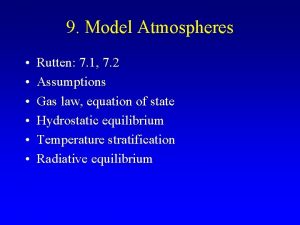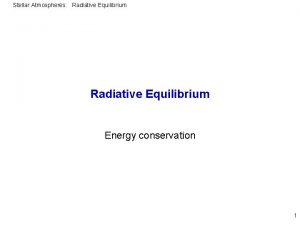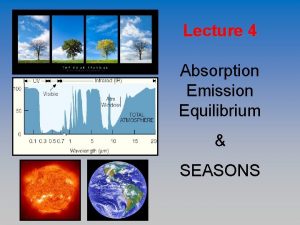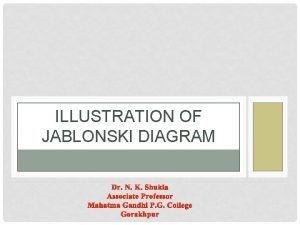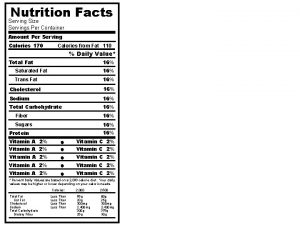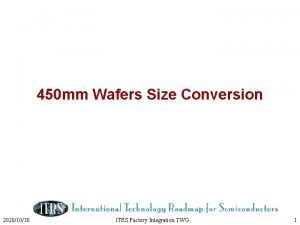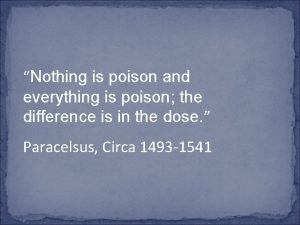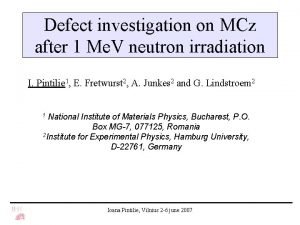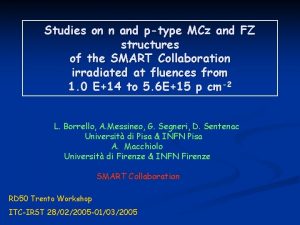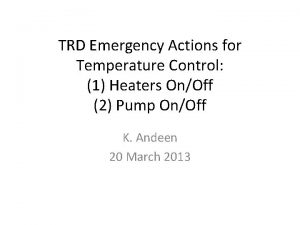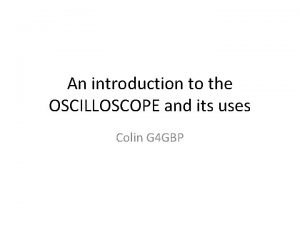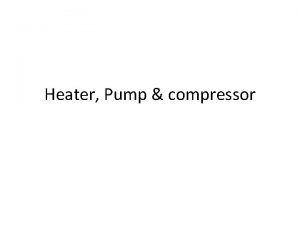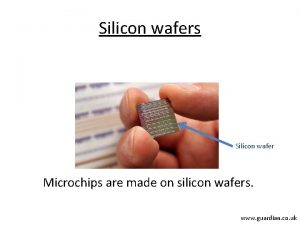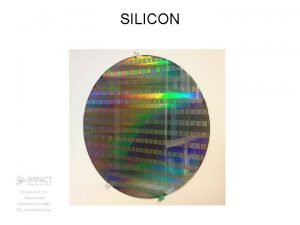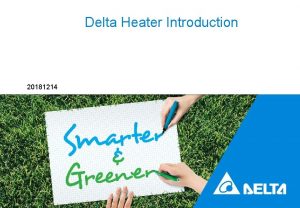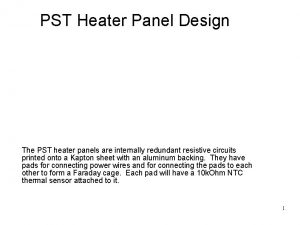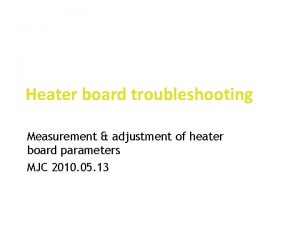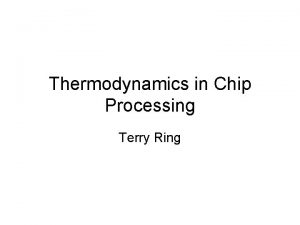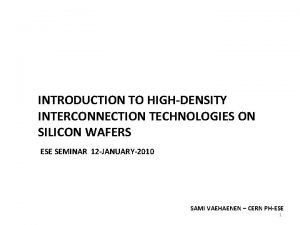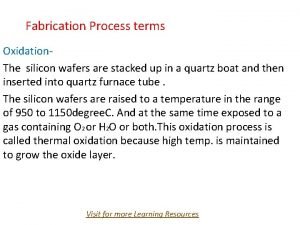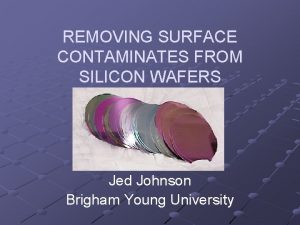Invacuum radiative heater for 3 silicon wafers John












- Slides: 12

In-vacuum radiative heater for 3” silicon wafers John Gregoire

Desired Properties • Oxygen partial pressure compatibility • 100 C-1000 C temperatures on substrate surface • Quick heat-up, cool-down time (~10 min) – Low thermal mass, modest thermal contact between substrate and heater body • Compatibility with current U. S Inc. Heaters – This is a geometrical consideration with the distance from the substrate surface to the opposite end of the heater being the most important dimmension • Use halogen bulbs from Home Depot – (these are simply tungsten filaments in a vacuum-tight seal filled with inert gas and a halogen to help redeposit evaporated tungsten on filament, thus extending bulb lifetime)

Silicon vs. Tantalum on silicon • Silicon has a band gap of 1. 14 e. V • Tungsten wire is 0. 007” diameter and thus a current of – 0. 5 A => Tungsten is at 1000 K – 7 A => Tungsten is at 3000 K • Assuming heater radiates as blackbody at these temperatures, the below plots show the amount of silicon absorption will vary with current (voltage applied to bulbs) and will always be much lower than desired. As a result, all temperature tests are done on substrates with >1000 A of Ta sputtered on. These are blackbody radiation plots at 1000 K, 2000 K, and 3000 K. All three plots have different scaling for ease in comparison with Si band gap (vertical line).

Notes on development • Single bulb systems considered – A single bulb heater based on a Lesker product was tested and uniformity was found to be poor.

Single-bulb heater test • 60 V, 3 A, 180 W test • Variations in excess of 120 deg

Thermodynamics • The 3 phenomena to consider are – photons emitted from the filament colliding with the substrate directly (strongly dependant on filament position) – photons emitted from the heater body colliding with the substrate (fairly constant background) – thermal conductivity of the substrate (suppresses thermal gradients).

Modeling • Considering a filament to be a line of point radiation sources, geometry and integration can be used to calculate the intensity of radiation experienced at every point on a substrate • Modeling of thermodynamics of direct-incidence photons was performed to investigate improvements on the single bulb heater. • The different light bulbs considered in this investigations were PHILIPS 250 W, 300 W and 500 W quartz halogen bulbs. The only quantities specific to the different types of bulbs in this treatment are the length of the filament and the linear (radiated) power density. – The radiated power densities of the bulbs were measured with an applied voltage of 30 V

Modeling (cont) • More than a dozen different 1 -, 2 -, 3 -, and 4 -bulb configurations were considered • With this treatment, contour plots of the radiation intensity provide numerical information on the heating of the substrate due to photons that collide with the substrate directly. • The contour plots also allow semi-quantitative analysis of the temperature gradients that would exist with no thermal conductivity in the substrate. Thus, one is able to make educated guesses concerning the extent to which temperature variations resulting from this model will be suppressed by thermal conductivity in the substrate. • The final thermodynamics to keep in mind is that the heater design will include a reflector box that will add an approximate uniform radiation intensity to the entire substrate

Model results • This model indicated that with a single bulb, the center of the substrate received twice as much radiation intensity as the edge of the substrate. • The optimal bulb configurations were 4 -bulb ensembles with complicated geometry that would not make for practical manufacturing • The only configuration with acceptable contour plot results and possibility for ease in manufacturing are ensembles of 3 parallel 500 W bulbs – There are some nice theoretical configurations that involve perpendicular bulbs, but they cannot be realized due to finite bulb thickness.

Parameters of 3 -bulb assemblies • 3 identical bulbs are parallel with the center bulb at a height a above the substrate, shifted away from center along the axis of the bulb a distance b. The two other bulbs are symmetric about the center bulb a distance c above the substrate, separated by 2 d, and shifted away from center a distance f in the opposite direction from the center bulb shift

Design parameters and model results scenario alpha beta chi delta epsilon a center bulb-substrate separation 0. 95 1. 2 1 1. 1 b center bulb on-axis shift 0. 55 0. 6 0. 5 c outer bulb-substrate separation 0. 75 0. 8 d outer bulb-outer bulb separation *0. 5 1. 2 1 1 1. 2 1 f outer bulb on-axis shift (direction opposite of b) 0. 55 0. 4 0. 5 max intensity (energy/s/area) on substrate (arb units) 120 118 112 123 36 31 35 35 32 max percent variation in intensity ALL DISTANCES IN INCHES The contours on the following slide are of intensity of photons incident directly from filaments onto 3” substrates. The filament positions are depicted by straight lines. It is worth noting that the filament from a 500 W lamp is considered to be only the coiled portion of the wire and is thus significantly shorter than the entire lamp assembly.

alpha beta alpha chi beta chi delta epsilon a 0. 95 1. 2 1 1. 1 b 0. 55 0. 6 0. 5 c 0. 75 0. 8 d 1. 2 1 1 1. 2 1 f 0. 55 0. 4 0. 5 delta **epsilon**
 Radiative equilibrium temperature
Radiative equilibrium temperature Radiative equilibrium temperature
Radiative equilibrium temperature Radiative forcing definition
Radiative forcing definition Radiative equilibrium temperature
Radiative equilibrium temperature Draw jablonski diagram
Draw jablonski diagram Doritos serving per container
Doritos serving per container Itrs 로드맵
Itrs 로드맵 Pumpkin spice communion wafers
Pumpkin spice communion wafers Mcz wafers
Mcz wafers Mcz wafers
Mcz wafers Isolation of operating field
Isolation of operating field Water heater trd
Water heater trd In an oscilloscope tube what is the purpose of the heater
In an oscilloscope tube what is the purpose of the heater
